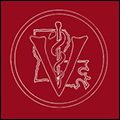Tissue engineered autologous cartilage-bone grafts for temporomandibular joint regeneration
Document Type
Article
Publication Date
10-14-2020
Abstract
Joint disorders can be detrimental to quality of life. There is an unmet need for precise functional reconstruction of native-like cartilage and bone tissues in the craniofacial space and particularly for the temporomandibular joint (TMJ). Current surgical methods suffer from lack of precision and comorbidities and frequently involve multiple operations. Studies have sought to improve craniofacial bone grafts without addressing the cartilage, which is essential to TMJ function. For the human-sized TMJ in the Yucatan minipig model, we engineered autologous, biologically, and anatomically matched cartilage-bone grafts for repairing the ramus-condyle unit (RCU), a geometrically intricate structure subjected to complex loading forces. Using image-guided micromilling, anatomically precise scaffolds were created from decellularized bone matrix and infused with autologous adipose-derived chondrogenic and osteogenic progenitor cells. The resulting constructs were cultured in a dual perfusion bioreactor for 5 weeks before implantation. Six months after implantation, the bioengineered RCUs maintained their predefined anatomical structure and regenerated full-thickness, stratified, and mechanically robust cartilage over the underlying bone, to a greater extent than either autologous bone-only engineered grafts or acellular scaffolds. Tracking of implanted cells and parallel bioreactor studies enabled additional insights into the progression of cartilage and bone regeneration. This study demonstrates the feasibility of TMJ regeneration using anatomically precise, autologous, living cartilage-bone grafts for functional, personalized total joint replacement. Inclusion of the adjacent tissues such as soft connective tissues and the TMJ disc could further extend the functional integration of engineered RCUs with the host.
Publication Source (Journal or Book title)
Science translational medicine
Recommended Citation
Chen, D., Wu, J. Y., Kennedy, K. M., Yeager, K., Bernhard, J. C., Ng, J. J., Zimmerman, B. K., Robinson, S., Durney, K. M., Shaeffer, C., Vila, O. F., Takawira, C., Gimble, J. M., Guo, X. E., Ateshian, G. A., Lopez, M. J., Eisig, S. B., & Vunjak-Novakovic, G. (2020). Tissue engineered autologous cartilage-bone grafts for temporomandibular joint regeneration. Science translational medicine, 12 (565) https://doi.org/10.1126/scitranslmed.abb6683

